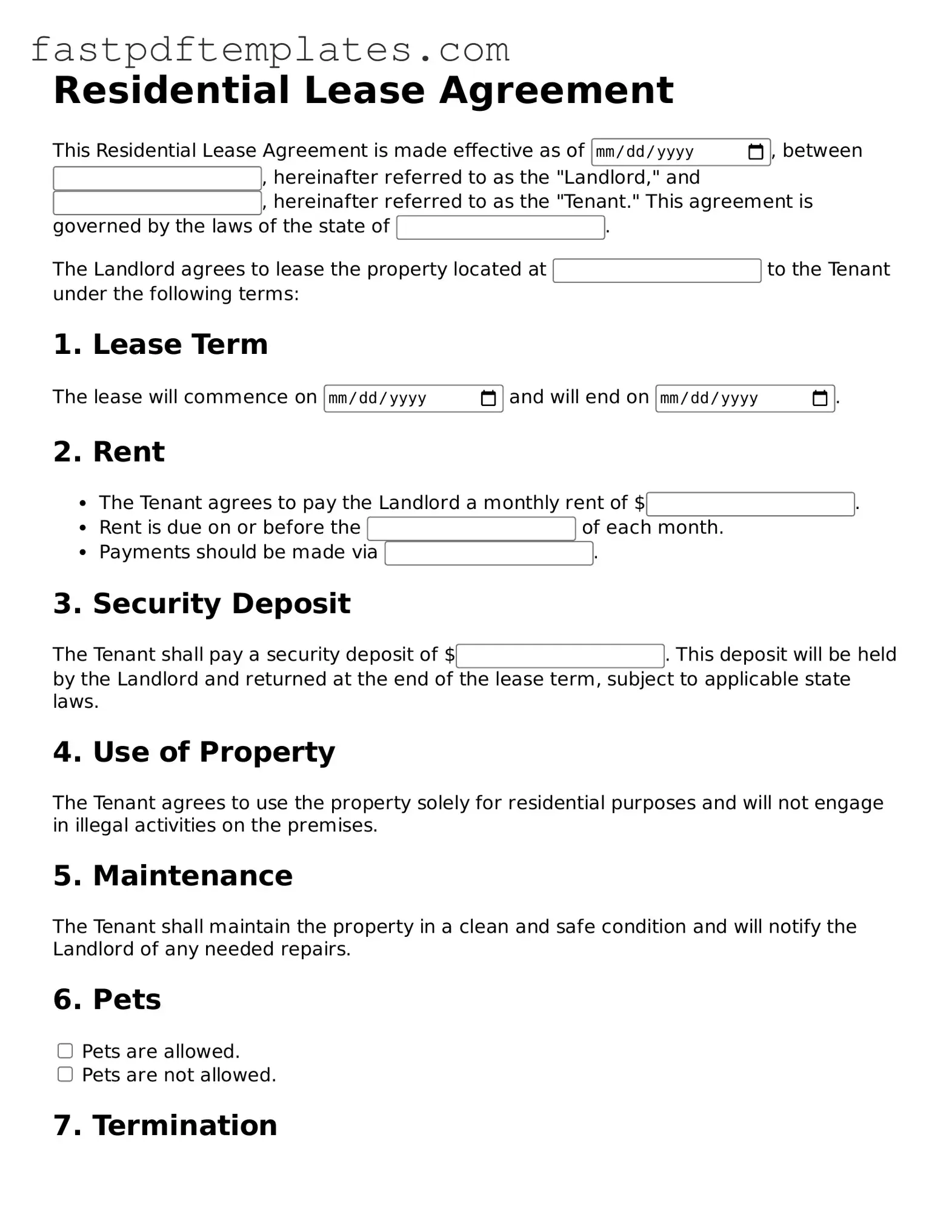A rental agreement is one of the most similar documents to a lease agreement. Both serve as contracts between a landlord and a tenant, outlining the terms of occupancy. While a lease agreement typically covers a longer duration, often a year or more, a rental agreement usually pertains to shorter terms, such as month-to-month arrangements. Both documents specify the rights and responsibilities of each party, including rent payment schedules, maintenance obligations, and rules regarding property use.
A sublease agreement is another document closely related to a lease agreement. This occurs when a tenant (the original lessee) rents out their leased property to another person (the sublessee). The original tenant remains responsible to the landlord, while the sublessee agrees to the terms set forth in the sublease. Like a lease agreement, it outlines the duration of occupancy, rent amount, and any specific conditions that the sublessee must follow. It’s essential that the original lease allows for subleasing to avoid potential conflicts.
A purchase agreement shares similarities with a lease agreement in that both are legally binding contracts. However, a purchase agreement involves the sale of property rather than the rental of it. In both documents, the terms are clearly defined, including price, payment method, and conditions for closing the deal. While a lease agreement typically focuses on the rights of a tenant to occupy a property, a purchase agreement centers on the transfer of ownership from seller to buyer.
A property management agreement is another document that aligns closely with a lease agreement. This type of agreement is established between a property owner and a management company. It details the management company’s responsibilities, such as collecting rent, maintaining the property, and handling tenant relations. Similar to a lease, it outlines the expectations and obligations of both parties, ensuring clarity in the management of the property.
An occupancy agreement is akin to a lease agreement but is often used in specific situations, such as in shared housing or student accommodations. This document establishes the terms under which individuals can reside in a property, detailing rent, duration, and shared responsibilities. Like a lease agreement, it aims to protect the rights of both the occupant and the property owner, ensuring a clear understanding of the living arrangement.
A loan agreement, while primarily focused on borrowing and lending money, shares structural similarities with a lease agreement. Both documents outline the terms and conditions of an arrangement between two parties. In a loan agreement, the borrower agrees to repay the lender under specific conditions, just as a tenant agrees to pay rent to a landlord. Both agreements include details such as payment schedules, interest rates (if applicable), and consequences for non-compliance.
A vendor agreement can also be compared to a lease agreement in terms of outlining the terms of a business relationship. This document is used when one party provides goods or services to another. Similar to a lease, it specifies the obligations of each party, including payment terms, delivery schedules, and quality standards. Both agreements aim to protect the interests of the parties involved and ensure that the terms of the relationship are clearly defined.
Finally, a joint venture agreement is somewhat similar to a lease agreement in that it establishes a partnership between two or more parties for a specific purpose. This document outlines each party's contributions, responsibilities, and profit-sharing arrangements. Just like a lease agreement, it is designed to ensure that all parties understand their roles and obligations, fostering a cooperative environment for achieving shared goals.
